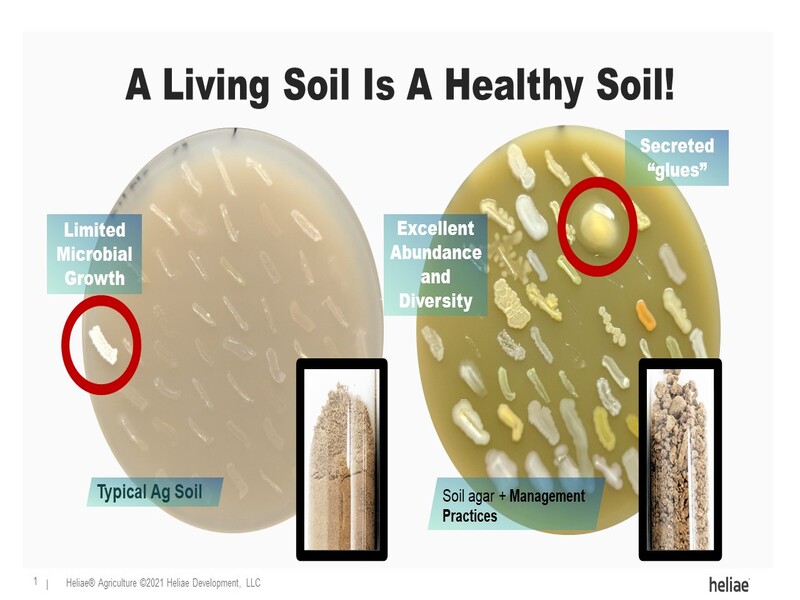USA
May 16, 2022
May 16, 2022 – Many farmers – and gardeners – focus on the physical and chemical management of their farms (or gardens). Techniques such as no-till, or best practices in fertilizer management have had many advances. The Soil Science Society of America’s (SSSA) May 16th Soils Matter blog explores advances in soil additions that help soil biology.

Photo: Healthy soil is characterized by abundant and diverse microbial communities. Soil health can be managed to promote microbial growth using either products or practices, as discussed in this blog. On the left, we have soil that is not managed for soil health and microbial life. On the right, we have employed one of several available management practices to help promote abundance and diversity belowground. PhycoTerra® was used in this example. Credit: Heliae® Agriculture.
Blogger Karl Wyant says there are two ways to influence soil biology: practices and products. Practices, like the physical management of the soil, also benefit soil biology. Products “are additions that can be used in a field management plan to help optimize soil biology. These products, when sorted by their active ingredient, are typified as microalgae, molasses, fulvic and humic acids, kelp products, and living bacteria and fungi inoculants, etc.”
“Your soil is teeming with fungi and bacteria, and they are ready to go to work for your farm or garden,” says Wyant. The problem? “They are starving and will go dormant on you until conditions improve. Research shows that most soils are generally low in the food stuff that microbes like to eat, and that food scarcity will limit the activity of your soil biology.”
To read the full blog, visit https://soilsmatter.wordpress.com/2022/05/15/what-is-the-current-research-about-soil-additions-to-help-soil-biology/
This blog is sponsored by Phycoterra.